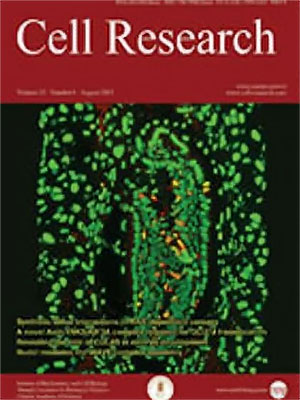Volume 2 Issue 2, July 1992: 165-181
ORIGINAL ARTICLES
Identification of the nuclear matrix and chromosome scaffold in dinoflagellate Crypthecodinium cohnii
Shutao Cai1, Congmei Zeng2, Jingyan Li2 and Zhonghe Zhai1
1Department of Biology, Beijing University, Beijing 100871, China.
2Kunming Institute of Zoology, Academia Sinica, Kunming 650107, China.
Correspondence:
Dinoflagellate is one of the primitive eukaryotes, whose nucleus may represent one of the transition stages from prokaryotic nucleoid to typical eukaryotic nucleus. Using selective extraction together with embeddment−free section and whole mount electron microscopy, a delicate nuclear matrix filament network was shown, for the first time, in dinoflagellate Crypthecodinium cohnii nucleus. Chromosome residues are connected with nuclear matrix filaments to form a complete network spreading over the nucleus. Moreover, we demonstrated that the dinoflagellate chromosome retains a protein scaffold after the depletion of DNA and soluble proteins. This scaffold preserves the characteristic morphology of the chromosome. Two dimensional electrophoreses indicated that the nuclear matrix and chromosome scaffold are mainly composed of acidic proteins. Our results demonstrated that a framework similar to the nuclear matrix and chromosome scaffold in mammalian cells appears in this primitive eukaryote,suggesting that these structures may have been originated from the early stages of eukaryote evolution.
Cell Res 2: 165-181; doi:10.1038/cr.1992.16
FULL TEXT | PDF
Browse 2662


